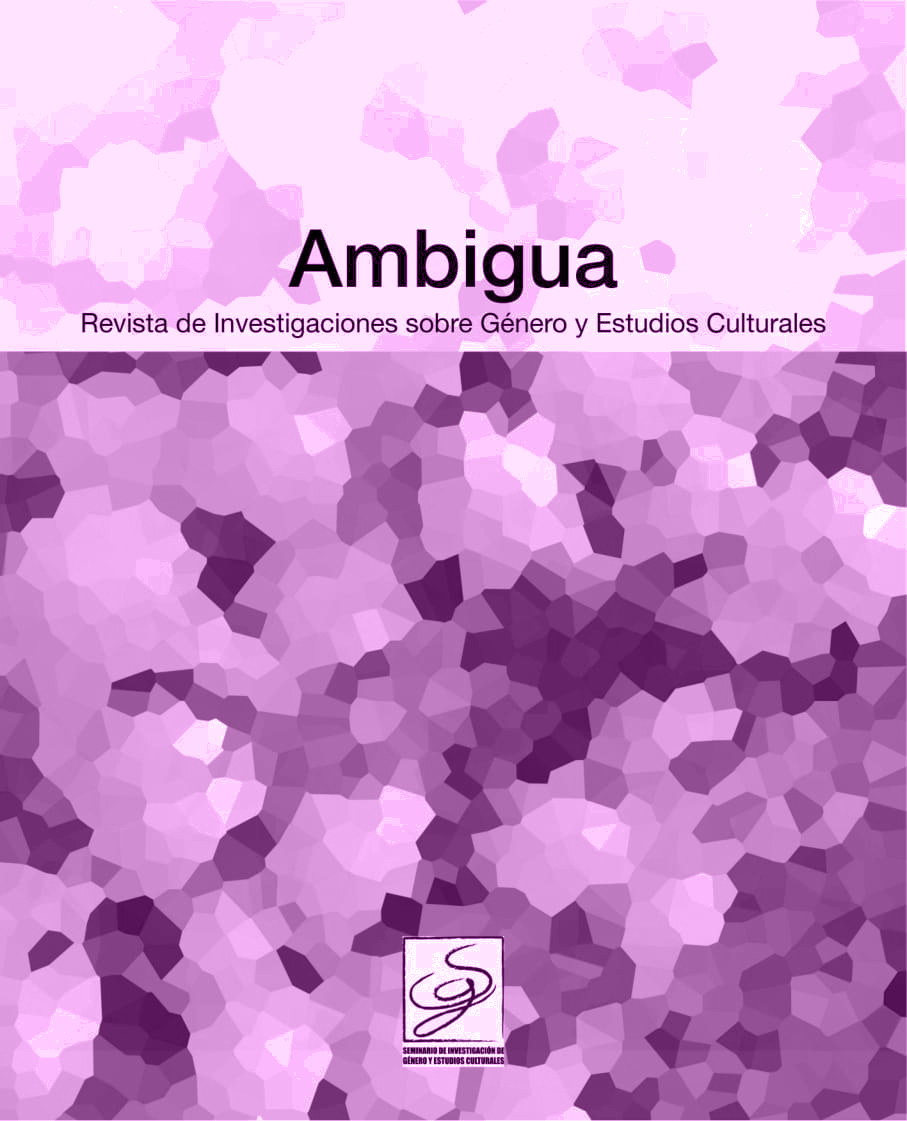Dimensions and figures inscribed in child sexual abuse
reflections from the ecological model of violence
DOI:
https://doi.org/10.46661/ambigua.5167Keywords:
child sexual abuse, victim, ecological model of violence, witness , abuserAbstract
The purpose of this article seeks to put into dialogue a series of reflections around three figures registered in the occurrence of child sexual abuse: the victims, the abuser and the witness. These reflections reached arise from the findings resulting from the qualitative research on this sexual crime, which were achieved from the realization of three discussion groups in the municipalities of Aquitania and Chitaraque of the department of Boyacá, Colombia with the participation of different institutional and community actors belonging to this region of the country. The results obtained are analyzed in the light of the integrated feminist ecological model, seeking to identify the relationships and interactions that are built between each of these actors, taking into account the personal dimensions of the microsystem, exosystem, and macrosystem that the model proposes. Faced with the findings, the mediation carried out by the blaming of the victims and the invisibility of abusers and witnesses stand out, as factors that contribute to the maintenance of child sexual abuse suffered by girls in the rural environments of these municipalities targeted by the investigation, and that can be extended to other settings in the department. Finally, the reflections reached are aimed at considering the mechanisms by which the patriarchal and adultcentric legacy are instituted as stimulators of sociocultural practices and imagery that legitimize and naturalize child sexual abuse as part of the continuum of violence suffered by girls.
Downloads
References
Alcaldía municipal de Chitaraque. 2016. ¡Plan de Desarrollo Municipal 2016-2019, “Unidos! Más progreso para Chitaraque. https://chitaraqueboyaca.micolombiadigital.gov.co/sites/chitaraqueboyaca/content/files/000043/2128_plandesarrollochitaraque20162019.pdf.
Alcaldía municipal de Aquitania. 2016. Soluciones firmes para Aquitania 2016-2019.
BARBOUR, Rosaline. Los grupos de discusión en la investigación cualitativa. Madrid: Ediciones Morata. 2013.
DESPENTES, Virginia. Imposible violar a una mujer tan viciosa. En Autora, Teoría King Kong (pp.39 a 63). Buenos Aires: Literatura Random House. 2018.
DÍAZ, Paola. El abuso sexual infantil en el entramado de las representaciones sociales del ser niña. Trabajo Social 22 (1): 119-143. Bogotá: Departamento de Trabajo Social, Facultad de Ciencias Humanas, Universidad Nacional de Colombia. 2020.
Naciones Unidas y Gobierno de España. Estudio sobre tolerancia social e institucional a la violencia basada en género en Colombia. Programa integral contra violencias de género. Bogotá: Ochoa Impresores ltda. 2010.
GOFFMAN, Erving. Estigma: la identidad deteriorada. Buenos Aires: Amorrortu, editores. 1993.
GUTIÉRREZ de Pineda, Virginia. Estructura, función y cambio de la familia en Colombia. Bogotá: Asociación Colombiana de Medicina. 1975.
HEISE, Lori. “Violencia contra las Mujeres un Marco Ecológico Integrado”. en: Annette Backhauss y Regine Meyer GTZ, Políticas Públicas y Género, Estudios, Violencias de género y Estrategias de Cambio. (1999), pp. 24-56.
INCHÁUSTEGUI, Teresa y Olivares, Edith. Modelo ecológico para una vida libre de violencia de género. 2011.
Insituto Colombiano de Medicina Legal y Ciencias Forenses. Informe Forensis. 2019. https://www.medicinalegal.gov.co/cifras-estadisticas/forensis
MODONESI, Masimo. Subalternidad. Universidad Nacional Autónoma De México: Instituto de Investigaciones Sociales. 2012 http://conceptos.sociales.unam.mx/conceptos_final/497trabajo.pdf
RUBIN, Gaile. El tráfico de mujeres: notas sobre la "economía política" del sexo. Nueva Antropología, vol. VIII, núm. 30, noviembre, Asociación Nueva Antropología A.C. Distrito Federal, México (1975), pp. 95-145.
SCHNEIDER, Elizabeth.. La violencia de lo privado. En Julieta Di Corletto (Comp.), Justicia, género y violencia (pp. 43-56). Buenos Aires: Libraria. 2010
SEGATO, Rita. Las estructuras elementales de la violencia: Ensayos sobre género entre la antropología, el psicoanálisis y los derechos humanos. 1° edición. Bernal: Universidad Nacional de Quilmes. 2003.
Downloads
Published
How to Cite
Issue
Section
License
Copyright (c) 2020 Paola Andrea Díaz Bonilla

This work is licensed under a Creative Commons Attribution-NonCommercial-ShareAlike 4.0 International License.
The authors agree with the following:
1. Authors retain copyright and grant the journal right of first publication with the work simultaneously licensed under a license Attribution-NonCommercial-ShareAlike 4.0 International (CC BY-NC-SA 4.0) that allows others to share the work with an acknowledgement of the work's authorship and initial publication in this journal.
2. Authors are able to enter into separate, additional contractual arrangements for the non-exclusive distribution of the journal's published version of the work (e.g., post it to an institutional repository or publish it in a book), with an acknowledgement of its initial publication in this journal.
3. Authors are permitted and encouraged to post their work online (e.g., in institutional repositories or on their website) prior to and during the submission process, as it can lead to productive exchanges, as well as earlier and greater citation of published work (See The Effect of Open Access).









